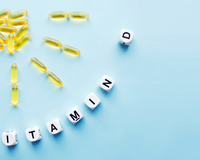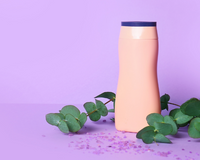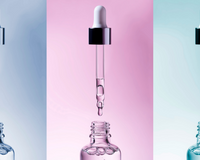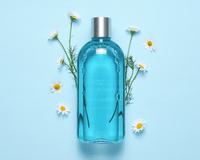Anti aging skin care products are among the most popular products of recent years. Everyone eats junk food, does not drink enough water, etc., because no one cares about their skin. How can we expect a healthy, young, and dynamic look when we are not giving our skin what it needs most? Imagine you are planting vegetables in a field. You water, you dig. When the harvest time comes, you wait for it to bear fruit. How reasonable is this? This is how it is on our skin. We need to take care of it and invest in it so that it looks healthy.
Anti Aging Skin Care Products
There is no more saturated industry in the world of cosmetic goods than the anti-aging sector. Serums, eye creams, and lotions promise to smooth fine wrinkles and dark spots while restoring the young glow of yesteryear. And sometimes these assurances are based on unreasonable expectations rather than genuine chances of achievement. So who better to assist weeds than dermatologists with all of their youth-enhancing creams and potions? After all, they have access to everything and know personally what works and what doesn't.
That's why we asked the top dermatologists to disclose the anti-aging products they truly use. Like the substance in the medical cabinet that they apply to their skin every day. While the options were various - don't worry, we'll get to those - the underlying message was that a three-pronged anti-aging strategy is ideal. First, there are preventive products, which include sunscreen as well as antioxidants such as vitamins C and E to help prevent symptoms of aging in the first place. Second, hydration is essential in any skincare routine, but it is extremely vital for anti-aging. Finally, the therapy incorporates anti-aging workhorse chemicals; retinoids, growth factors, and peptides were mentioned often when we spoke with these skincare specialists.
Aging by Age
The skin does not age as we think. We say you're getting old after your thirties, but it's not like that for your situation. As soon as the human skin is neglected or cannot meet its needs, it ages day by day by giving of itself. Let's take a look at aging according to these ages together. Anti aging skin care products are suitable for all ages.
Aging in the 20s
If you want to avoid fine lines and wrinkles, there are a few things you may do in your twenties. After all, the best defense is a strong assault. If you're thinking of running away to be one of the first 20 people to receive a facelift, keep this in mind: Delaying aging in your twenties is not the same as delaying aging in your sixties. In your twenties, you tend to focus on prevention, but in your sixties, you tend to focus on repair. However, all anti-aging initiatives and products must focus on UV and visible light damage, pollution, climate change, and irritants. Rather than diving into rigorous treatments that may not be suited for younger skin, begin by protecting it. As a result, you may not need to take significant steps as you age.
Aging in the 30s
In your thirties, your skin begins to mirror the complexities of adulthood. People are working hard or attempting to conceive, or they may be experiencing irregular periods. All of this can contribute to acne outbreaks and tired-looking skin. Furthermore, the 30s are when we begin to see indications of environmental and genetic aging. This includes fine wrinkles, uneven pigmentation, and maybe some volume loss as a result of the progressive loss of face supporting tissue, fat, and bone tissue.
All of this is to say that now is the time to start fine-tuning your regimen—or, if you've been lazy at this point, developing a routine that includes at least three products with moisturizing components like glycerin and hyaluronic acid. The acid is mixed with high-quality sun protection. If you're among the best performers in our age group, you could want to add alternatives like an antioxidant serum that can repair the free radical damage linked with premature aging, or you can go for a retinoid treatment and neck cream.
Aging in the 40s
The 40s are a watershed moment in terms of facial aging. Aging begins abruptly and drastically in your 40s owing to the beginning of hormonal changes. Estrogen production diminishes gradually during perimenopause, which generally begins in the mid to late 40s, and then rapidly when menopause occurs.
What precisely can estrogen deficiency do to your face? Your skin's general thickness will be decreased, as will its dryness and suppleness, resulting in sagging. After the age of 30, our collagen production decreases by 1%, and we begin to lose a teaspoon of oil on our face each year. Fine wrinkles and hyperpigmentation are the results of decades of sun exposure and oxidative stress. Meanwhile, the normal loss of supporting fat and bone causes wrinkles on the skin.
Fat loss and sagging are deep tissue problems that can only be treated in a doctor's office. However, there are several alternative techniques to cure aging skin at home. Whether you prefer a basic routine or a complete skin protection regimen, doctors and a famous esthetician have product recommendations for you.
Aging in the 50s
A regular face wash is the foundation of the finest skin care for women over 50. Mature skin should be cleaned using a gentle, non-irritating cleanser that will not remove the skin's natural oils or aggravate dry or sensitive skin. Because dry skin is typically sensitive, it is advised to use a cleanser that provides adequate barrier protection with skin-protecting compounds such as ceramides. How to be the greatest They recommend using a toner that "acts as a carrier," which can offer an additional layer of moisture in the next skincare stages, to help preserve the skin's pH balance after cleaning.
Aging in the 60s
By the 60s, the most recent and visible change is skin thinning. Topical treatments can help to reduce fine lines and hyperpigmentation while also enhancing firmness and texture. Experts caution that they are insufficient to counteract drooping caused by decreased volume on the face. If you're searching for something more than a skincare routine can provide, there are less intrusive choices.









